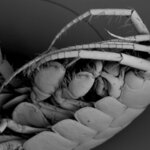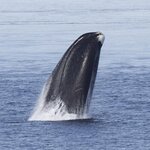Ecology & Zoology

A brilliant-green sea slug can live for months at a time "feeding" on sunlight like a plant and now scientists have the first direct evidence that its chromosomes have some genes that come from the algae it eats.
Those genes help sustain photosynthetic processes inside the slug that provide it with all the food it needs.
Importantly, this is one of the only known examples of functional gene transfer from one multicellular species to another, which is the goal of gene therapy to correct genetically based diseases in humans.
The rich green color of the photosynthesizing sea slug,…

Sex or no sex? If you want to be healthier as a species over time, sexual reproduction is the way to go, according to a new study.
It's a long-debated topic among biologists - some argue that sexual reproduction is superior because species don't accumulate harmful mutations as easily as in asexual reproduction.
Using various species of the evening primrose (Oenothera) as his model, Dr. Jesse Hollister, assistant professor at Stony Brook University in New York, and colleagues demonstrated strong support for reproducing sexually. "These findings allow us to understand why an…

Dolphins and seals have had eons to adapt to aquatic life, but they can still be taxed while pushing the boundaries, according to a paper in Nature Communications which found a surprisingly high frequency of heart arrhythmias in bottlenose dolphins and Weddell seals - at least during their deepest dives.
The normal dive response in marine mammals has long been understood to involve a marked reduction in heart rate (bradycardia) and other physiological changes to conserve limited oxygen reserves while the air-breathing animals are underwater. How marine mammals cope with the exertion…

A team of scientists has identified how a "sixth sense" in fish allows them to detect flows of water, which helps resolve a long-standing mystery about how these aquatic creatures respond to their environment. The work in Physical Review Letters illustrates how sensory systems evolve in accordance with physical principles while also offering a framework for understanding how sensory networks are structured.
It is well known that fish respond to changes in their fluid environment. These include avoiding obstacles, reducing swimming effort by slaloming between vortices, or whirlpools, and…

Up to 10% of adults living in developed countries fish for food and recreation and a new paper finds that in the Mediterranean Sea that could be up to 10% of the total production of fisheries - a large amount that is basically un-regulated outside buying a license.
The authors claim that in the Mediterranean the volume of fish taken out by recreational fishing can be equal or even greater than that of commercial fishing. The researchers made their determination using the results of 24 studies carried out in 15 marine areas in Spain (Tabarca and three areas of the Cap de Creus),…

Headshaking in horses, a neuropathic facial pain syndrome, often leaves affected horses impossible to ride and dangerous to handle, and can result in euthanasia.
It affects between 10,000 and 20,000 animals in the UK each year and there are no consistently safe and effective methods for it. A new study has found a treatment called percutaneous electrical nerve stimulation (PENS) could reduce signs of the condition in horses. The same PENS therapy is used in people to manage neuropathic pain. There are clinical similarities between facial pain syndromes in people, most notably…

Up close and personal with the demon shrimp. Amaia Green Etxabe - University of Portsmouth
By Alex Ford,University of Portsmouth
Demon vs killer shrimp sounds like the latest CGI movie to come out of Hollywood. But in fact these are two particularly pernicious crustaceans that have been making their way westward across Europe from countries surrounding the Black Sea, eradicating native freshwater rivals en route.
Unlike the meatier species we might be more familiar with from our dining plates, the killer shrimp (Dikerogammarus villosus) and the demon (D. Haemobaphes) are technically amphipods…
Researchers have developed a detailed explanation of how white-nose syndrome is killing bats in parts of North America - the fungus Pseudogymnoascus destructans makes bats die by increasing the amount of energy they use during winter hibernation.
Researchers from the U.S. Geological Survey and the University of Wisconsin created a model for how the disease progresses from initial infection to death in bats during hibernation. Since bats must carefully ration their energy supply during this time to survive without eating until spring, they tested the energy depletion hypothesis by…

Bowhead whales can live to be over 200 years and show little evidence of the age-related disease that are apparent in humans in our senior years.
There may soon by answers why, thanks to a complete bowhead whale genome and identify key differences compared to other mammals. Alterations in bowhead genes related to cell division, DNA repair, cancer, and aging may have helped increase its longevity and cancer resistance.
"Our understanding of species' differences in longevity is very poor, and thus our findings provide novel candidate genes for future studies," says senior author Dr…

In 2006, Dr. J. E. McPherson, professor emeritus at Southern Illinois University, was working with colleagues on a key to the nymphs of three midwestern species of assassin bug in the genus Sinea (i.e., S. complexa, S. diadema, and S. spinipes).
To test their key for accuracy, they asked several others to check it by comparing it with insects in their collections or laboratories.
All of them found the key to be satisfactory, except for one - Dr. Scott Bundy from New Mexico State University, who found discrepancies in specimens that had been collected in New Mexico and identified…